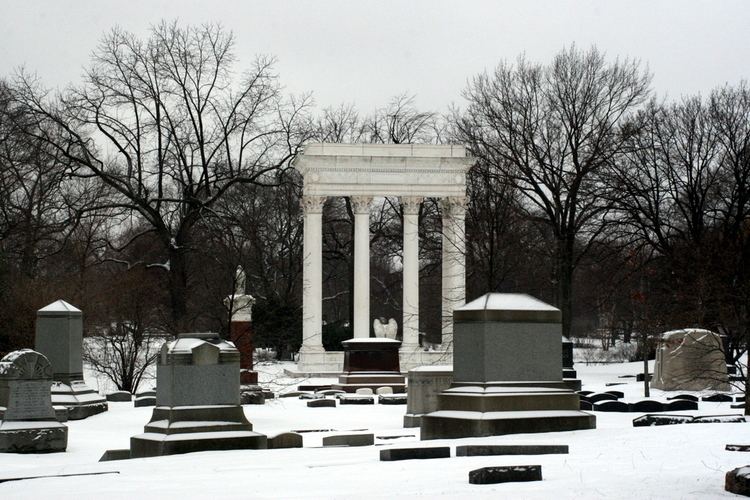NRHP Reference # 00001628 Phone +1 773-525-1105 Added to NRHP 18 January 2001 | Area 48 ha Year built 1860 | |
 | ||
Address 4001 N Clark St, Chicago, IL 60613, USA Hours Closed now Friday9AM–4PMSaturdayClosedSundayClosedMonday9AM–4PMTuesday9AM–4PMWednesday9AM–4PMThursday9AM–4PM Similar Getty Tomb, Eternal Silence, Oak Woods Cemetery, Bohemian National Cemetery, Sullivan Center | ||
Haunted graceland cemetery
Graceland Cemetery is a large Victorian era cemetery located in the north side community area of Uptown, in the city of Chicago, Illinois, USA. Established in 1860, its main entrance is at the intersection of Clark Street and Irving Park Road. The Sheridan stop on the Red Line is the nearest CTA "L" station. Among the cemetery's 121 acres, are the burial sites of several well-known Chicagoans.
Contents
- Haunted graceland cemetery
- Architecture and identity graceland cemetery
- History and geography
- Notable tombs and monuments
- Notable Burials
- Other cemeteries in the city of Chicago
- References
Architecture and identity graceland cemetery
History and geography
In the 19th century, a train to the north suburbs occupied the eastern edge of the cemetery where the "L" now rides. The line was also used to carry mourners to funerals, in specially rented funeral cars, requiring an entry on the east wall, now closed. At that point, the cemetery would have been well outside the city limits of Chicago. After the Great Chicago Fire in 1871, Lincoln Park which had been the city's cemetery, was deconsecrated and some of the bodies moved here. The edge of the pond around Daniel Burnham's burial island was once lined with broken headstones and coping transported from Lincoln Park. Lincoln Park then became a recreational area, with a single mausoleum remaining, the "Couch tomb", containing the remains of Ira Couch. The Couch Tomb is probably the oldest extant structure in the City, everything else having been destroyed by the Great Chicago Fire.
The cemetery is typical of those that reflect Queen Victoria's reconception of the early 19th century "graveyard". Instead of poorly maintained headstones, and bodies buried on top of each other, on an ungenerous parcel of land; the cemetery became a pastoral landscaped park dotted with memorial markers, with room left over for picnics, a common usage of cemeteries. The landscape architecture for Graceland was designed by Ossian Cole Simonds.
The cemetery's walls are topped off with wrought iron spear point fencing.
Notable tombs and monuments
Many of the cemetery's tombs are of great architectural or artistic interest, including the Getty Tomb, the Martin Ryerson Mausoleum (both designed by architect Louis Sullivan, who is also buried here), and the Schoenhofen Pyramid Mausoleum. The industrialist George Pullman was buried at night, in a lead-lined coffin within an elaborately reinforced steel-and-concrete vault, to prevent his body from being exhumed and desecrated by labor activists.
Along with its other famous burials the cemetery is notable for two statues by sculptor Lorado Taft, Eternal Silence for the Graves family plot and The Crusader that marks Victor Lawson's final resting place. The cemetery is also the final resting place of several victims of the tragic Iroquois Theater fire in which more than 600 people died.
Notable Burials
Other cemeteries in the city of Chicago
Graceland is one of three large 19th century cemeteries which were previously well outside the city limits; the other two being Rosehill (further north), and Oak Woods (South of Hyde Park) which includes a major monument to Confederate civil war dead.
In addition, directly south of Graceland across Irving Park Road is the smaller German Protestant Wunder's Cemetery and Jewish Graceland Cemetery (divided by a fence), established in 1851. Also, the Roman Catholic, Saint Boniface Cemetery (1863), is four blocks north of Graceland at the corner of Clark and Lawrence.
